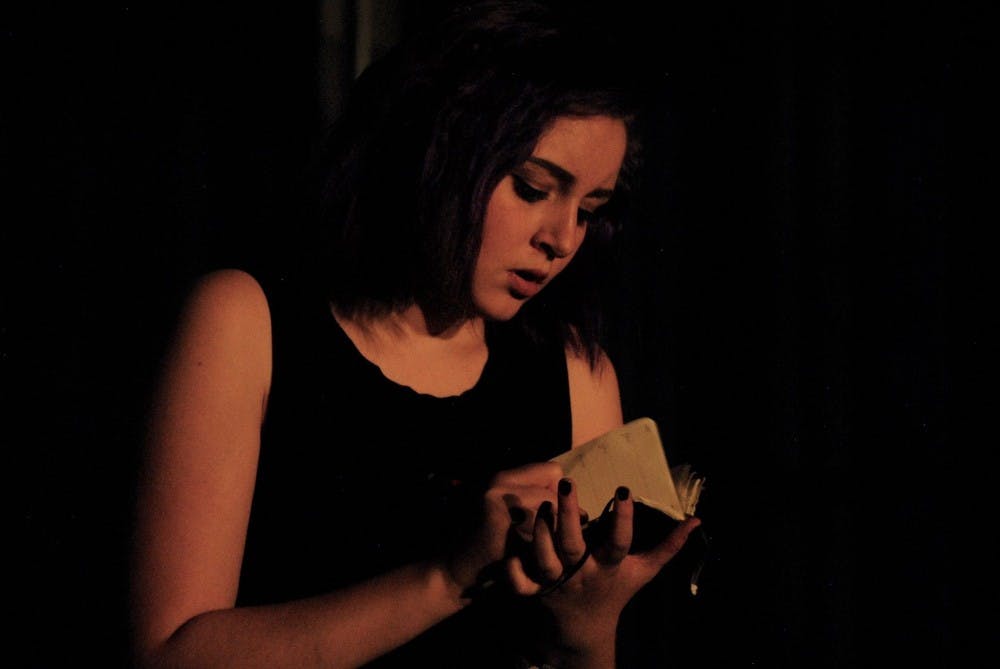The AU Rude Mechanicals presented its production of “Romeo & Juliet,” this past weekend in the Kreeger Auditorium. The show, directed by College of Arts and Sciences junior Callie Trawick, breathed new life into the classic play, giving Shakespeare’s characters an opportunity to have more dimension and expression of identity.
The cast began rehearsing on March 14, and Trawick said it has been a pretty short rehearsal process for a full production. Despite the limited rehearsal time, the opening night performance went off without a hitch.
“Just because the rehearsal process was short didn’t affect the work that went into it, and I’ve been working on this for a year and I cast actors that I knew would work hard and be able to handle a more rigorous rehearsal process,” Trawick said.
Trawick’s production had a strong indie-punk flavor due to the use of contemporary music by artists such as Lana Del Rey, Halsey, and Lorde and costumes that included plenty of velvet, acid-washed denim, crop-tops and combat boots.
“I think there’s a greater resonation with contemporary audiences if it’s put in the context they know best - their own,” Trawick said. “The aesthetic of the costumes was already roughly planned by me based on my interpretation of the characters and then executed brilliantly by our costume designer, Emily Billado.”
Trawick said the challenge with directing “Romeo & Juliet” is that it is the Shakespearean play. By this, she said she means that if you ask anyone to name a play that Shakespeare wrote they will probably say “Romeo and Juliet.” In turn, she said the main obstacle was putting on a show that feels new, something that makes viewers think it might end differently.
“Because it has that level of oversaturation in culture, people are reluctant to put it on because everyone’s seen it and everyone can vaguely quote it and everyone knows how it ends,” Trawick said.
Emma Hooks, a freshman in CAS, portrayed Juliet as relatable, down to earth and introverted. In one scene, Juliet is wearing a nose pore strip, pajamas and slippers while listening to music through her Apple earbuds.
Trawick chose to cast Elizabeth Morton, a sophomore in the School of
Communication, a woman, in the role of Romeo.
“Romeo as a woman highlights modern-day society’s treatment of women’s emotions - women are often considered irrational, their strong emotions invalidated,” Morton said. “Romeo is a character that lets her powerful feelings drive her actions, but there is truth and beauty to her feelings, and she doesn’t let anyone take that away from her.”
Morton stole every scene that she was in, and her portrayal of Romeo was three-dimensional. Romeo is often depicted as impetuous, dramatic and overly emotional, and the relationship between Romeo and Juliet is usually depicted as shallow and rash. But in Trawick’s production, the chemistry between Romeo and Juliet was believable and the characters were well fleshed out. Morton said she hoped that in this story and in love stories in general, gender doesn’t need to matter.
Trawick chose to end “Romeo & Juliet” ambiguously, showing Juliet hesitant to commit suicide and making it unclear if she ever does, keeping the audience on their toes in an excellent artistic decision.
“Because I am both a queer woman and an actress, I was tired of queer relationships being under-represented in modern productions of classical, public-domain plays and women not given the opportunity to play these iconic roles,” Trawick said. “Ultimately, it came down to the question of ‘why not?’”





